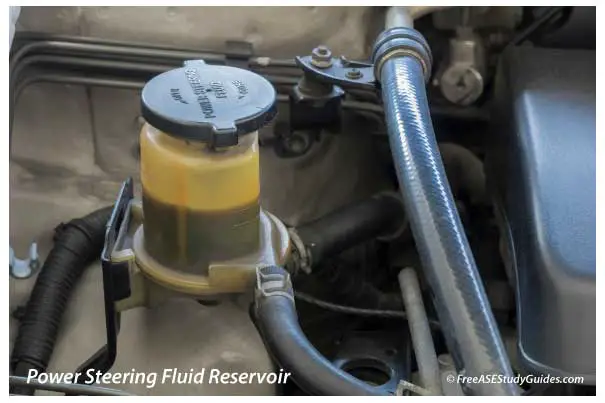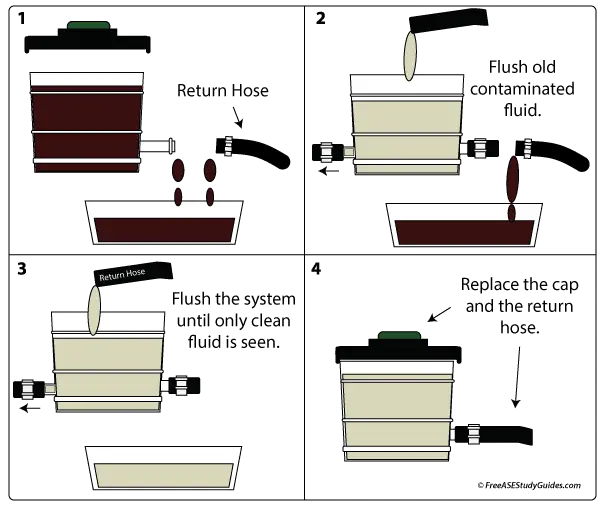Power Steering Fluid Flush
Power steering fluid lubricates, removes heat, and transfers hydraulic pressure. Therefore, it must withstand the high pressures and temperatures in today's hydraulic power steering systems.

When it turns dark brown or black colored, it has oxidized and lost its fundamental properties. As a result, particles from the pump and rack/gearbox collect at the bottom of the reservoir. If not flushed, varnish forms, seals harden, and hoses deteriorate.
Fresh power steering fluid contains additives that protect seals, hoses, the power steering pump, and rack and pinion from premature wear.

These systems usually contain a couple of pints of fluid. Generally, the exchange process includes using a fluid extractor or disconnecting the return hose from the pump to drain the fluid, replacing the hose, and refilling the reservoir.

The illustration shows a power steering fluid flush. Depending on how dirty and contaminated the system is, it may require a helper and several quarts of fluid.
Start and immediately shut down the engine. Repeat this process several times in a row to replace the old fluid. Listen for noise, and never run a hydraulic power steering pump dry.
Always use the correct fluid and flush or change the fluid according to the manufacturer's specifications. Some manufacturers recommend flushing with a solvent-free power steering cleaner before a regular fluid exchange or every 50,000 miles. It helps remove harmful deposits and debris that lead to power steering problems.